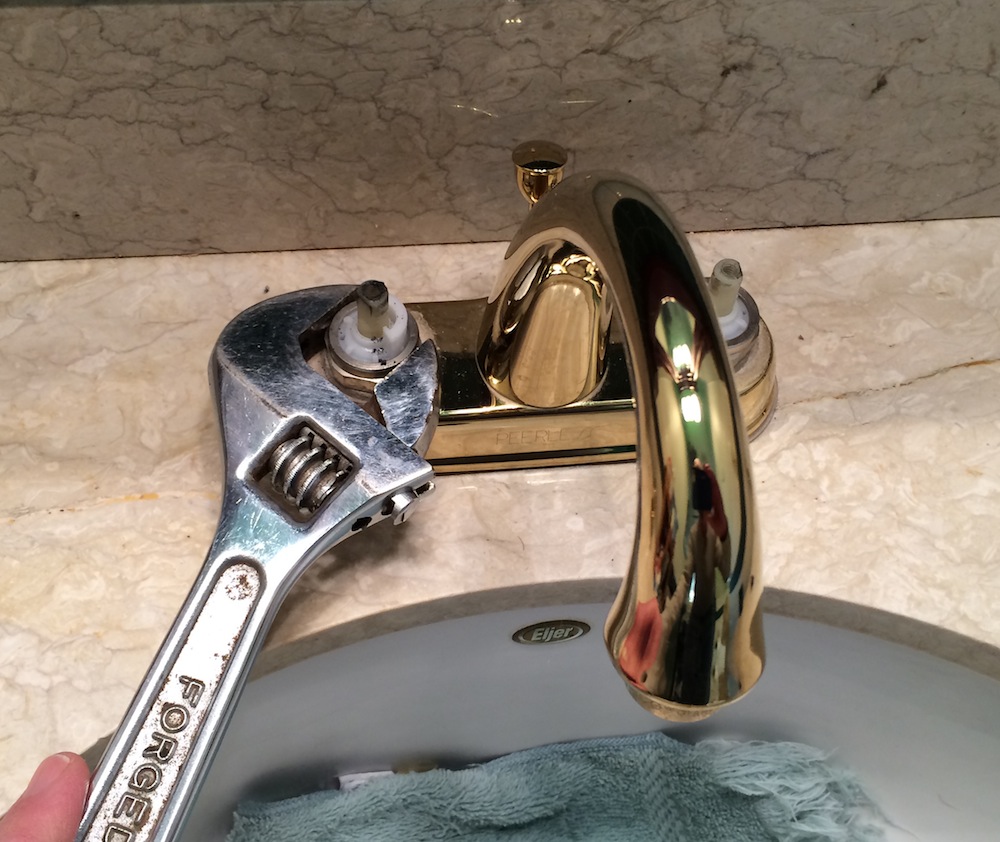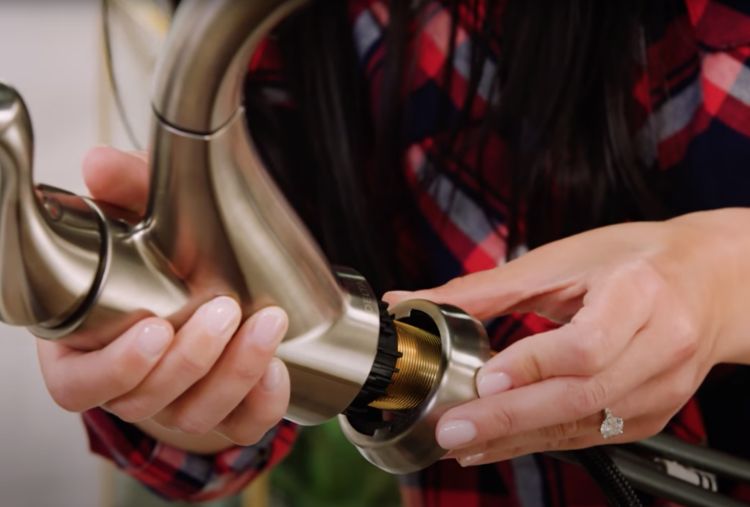The Motives Behind Correcting a Broken Faucet
CallThis great article listed below pertaining to Why Is It Important To Fix Your Leaking Tap/Faucet? is pretty much interesting. Try it and draw your own personal conclusions.

Leaking taps may look like a small aggravation, but their impact goes beyond just the aggravation of the sound. From drainage to incurring unnecessary financial prices and wellness dangers, disregarding a leaking tap can result in various effects. In this post, we'll explore why it's vital to resolve this usual household issue without delay and successfully.
Waste of Water
Environmental Effect
Trickling taps contribute substantially to water wastage. According to the Environmental Protection Agency (EPA), a single tap leaking at one drip per second can throw away greater than 3,000 gallons of water per year. This not just stress water sources however additionally influences communities and wildlife dependent on them.
Step-by-Step Guide to Repairing a Dripping Tap
Tools Required
Before trying to take care of a dripping tap, collect the required tools, consisting of an adjustable wrench, screwdrivers, replacement components (such as washers or cartridges), and plumber's tape.
Typical Faucet Issues and Their Solutions
Identify the sort of faucet and the certain concern causing the drip. Usual issues consist of damaged washing machines, corroded shutoff seats, or malfunctioning O-rings. Describe maker guidelines or online tutorials for detailed support on fixings.
Financial Costs
Enhanced Water Costs
Beyond the environmental impact, trickling faucets can pump up water bills considerably. The built up waste in time translates into higher energy expenses, which could have been prevented with timely repairs.
Potential Residential Property Damage
In addition, prolonged leaking can lead to harm to fixtures and surface areas bordering the tap. Water buildup can cause staining, rust, and even structural concerns if left unattended, leading to added repair service expenses.
Health and wellness Issues
Mold and Mildew Development
The continuous existence of moisture from a trickling faucet creates an excellent atmosphere for mold and mold development. These fungis not just compromise interior air quality however additionally present health and wellness dangers, particularly for people with respiratory conditions or allergies.
Waterborne Conditions
Stagnant water in dripping faucets can come to be a breeding place for microorganisms and various other microorganisms, boosting the threat of waterborne conditions. Pollutants such as Legionella germs thrive in stagnant water, possibly bring about significant ailments when consumed or breathed in.
DIY vs. Specialist Repair service
Benefits and drawbacks of DIY Repair Work
While some may attempt to fix a dripping tap themselves, DIY fixings feature their own set of obstacles. Without correct knowledge and tools, do it yourself efforts can worsen the issue or result in insufficient fixings, extending the problem.
Advantages of Hiring a Professional Plumber
Employing a professional plumber makes certain that the underlying source of the leaking faucet is addressed effectively. Plumbing professionals have the competence and devices to identify and fix faucet problems efficiently, conserving time and reducing the risk of more damage.
Environmental Obligation
Specific Contribution to Conservation
Taking responsibility for fixing leaking taps lines up with broader efforts toward water conservation and environmental sustainability. Every person's activities collectively make a significant effect on maintaining precious sources.
Lasting Living Practices
By focusing on punctual repair services and taking on water-saving practices, individuals contribute to lasting living methods that benefit both existing and future generations.
Safety nets
Regular Upkeep Tips
To avoid dripping faucets, do routine upkeep such as cleaning aerators, examining for leaks, and changing damaged parts quickly. In addition, take into consideration installing water-saving gadgets or upgrading to extra reliable fixtures.
Significance of Prompt Repairs
Dealing with dripping taps as soon as they're observed stops further water wastefulness and prospective damage, inevitably saving both water and money in the future.
Impact on Residential Property Worth
Assumption of Well-Maintained Building
Maintaining a building in good condition, including resolving upkeep problems like leaking taps, improves its viewed worth and value amongst possible customers or occupants.
Influence on Resale Value
Features with well-maintained plumbing fixtures, consisting of faucets, command greater resale values in the property market. Attending to dripping faucets can contribute to a favorable impact during home inspections and arrangements.
Conclusion
Attending to a leaking faucet exceeds simple comfort; it's a vital action toward saving water, lowering economic expenses, and protecting health and wellness and property. Whether via do it yourself repairs or specialist help, doing something about it to deal with trickling taps is a small yet impactful method to advertise accountable stewardship of sources and contribute to a much healthier, more sustainable future.
How to Fix a Dripping or Leaky Faucet
A leaking faucet is one of the most common problems that homeowners encounter, but it being commonplace doesn’t make it any less annoying. The constant drip drip drip of a leaking bathtub faucet, showerhead, or sink tap can disturb your home’s serenity. Left neglected, a dripping faucet can also result in higher water bills and discoloration or mold growth in your sink or plumbing fixtures.
Fortunately, you don’t have to be a trained plumber to know how to stop a dripping faucet. With some basic tools, replacement parts, and a little patience, leaky faucet repair is a breeze. In this article, we’ll explain what causes dripping faucets and how you can fix them.
What Causes a Leaking Faucet?
Kitchen and bathroom faucets come in all manner of designs, but most involve some combination of valves, O-rings, seals, and washers. The O-ring is usually the weakest link, but any one of these pieces can wear down over time. Heat, moisture, temperature fluctuations, minerals, mold, and movement can contribute to warping and corrosion, breaking the watertight seal. This just comes with the territory of being a homeowner. Everything is always subject to wear and tear, and some component parts of your appliances and fixtures need to be replaced on occasion. At least replacement O-rings are cheap!
More rarely, dripping faucets can be a symptom of excessively high water pressure. Were this the case in your home, you would probably notice that the leak is not isolated to one faucet. Water pressure issues are harder to resolve on your own. We recommend contacting a professional plumber if you suspect your water pressure is too high.
How to Fix a Dripping Faucet
Pipe wrench or monkey wrench Allen wrench set Screwdrivers Old towel or rag Shut off the water.
Before you do anything, you need to turn off the water to keep from drenching your kitchen or bathroom. You should find a valve under the sink and against the wall. Once you’ve turned this valve, try turning the faucet on to confirm that the water source has been cut off.
If you can’t locate your local valve for the faucet you’re working on, you can always shut off the water to the house at the main valve. Of course, this will prohibit anyone from using the sinks, showers, or toilets while you’re working on the faucet that’s giving you trouble.
Plug or block the drain.
You’ll be disassembling the faucet and removing some small bits of hardware. Plug the drain with a stopper or rag to avoid the possibility of a small screw falling into your P-trap.
Take apart the faucet assembly.
There are several varieties of kitchen and bathroom faucets, each with its own manner of assembly. For detailed instructions on how to disassemble your faucet, you can refer to the fixture’s manual or contact the manufacturer. If you know whether you have a ball, disc, cartridge, or compression faucet, you can find detailed schematics online.
In general, you need to begin by removing the faucet handles. You might notice a small screw that you’ll need to remove with a screwdriver or Allen wrench. If you don’t see any visible securing hardware, it’s likely hidden under a decorative cap that can be unscrewed or popped off with flathead screwdriver.
Remove each piece methodically, consulting a schematic when necessary. Take notes or arrange the pieces in such a way to make it easier to correctly reassemble the faucet later.
Remove the cartridge.
Once you’ve removed the handles and securing hardware, you should be able to remove the valve cartridge or stem. Some cartridges will slide right out. Other faucet models will require you to loosen a nut with a pipe wrench before you can remove the valve stem.
Examine the exposed hardware.
With the cartridge or stem removed, inspect the component parts. Check the rubber O-rings for wear and tear. Also examine the seat washer for corrosion or other damage. These pieces are usually the responsible parties for a dripping faucet, but it’s worth inspecting the other component parts while you have the faucet disassembled.
Find replacement parts.
Once you’ve identified which faucet component has failed, find an identical replacement. Your local hardware store should have O-rings, seat washers, and other standard components in stock. If you have a luxury or uncommon faucet, you may have to contact the manufacturer for a replacement part.
It’s a good idea to take your old parts with you to the hardware store so you can compare them with the store’s inventory and be sure you’re purchasing the correct replacement.
Reassemble the faucet.
With your new parts in hand, reconstruct the faucet and handles. Don’t be tempted to overtighten screws or nuts. You might think this could create a better seal, but it can instead damage or bend a delicate part of the assembly and create a new problem for you.
Turn on the water and test the faucet.
The only thing left to do is test your work. Unplug the sink, turn the water back on, and try the faucet. Congratulate yourself on a job well done!
https://www.libertyhomeguard.com/how-to-fix-a-dripping-or-leaky-faucet/

As a person who reads about Why Are My Faucets Dripping (And Can I Fix It Myself)?, I figured sharing that article post was a great idea. Sharing is nice. You just don't know, you may just be doing someone a favor. Thank you so much for taking the time to read it.